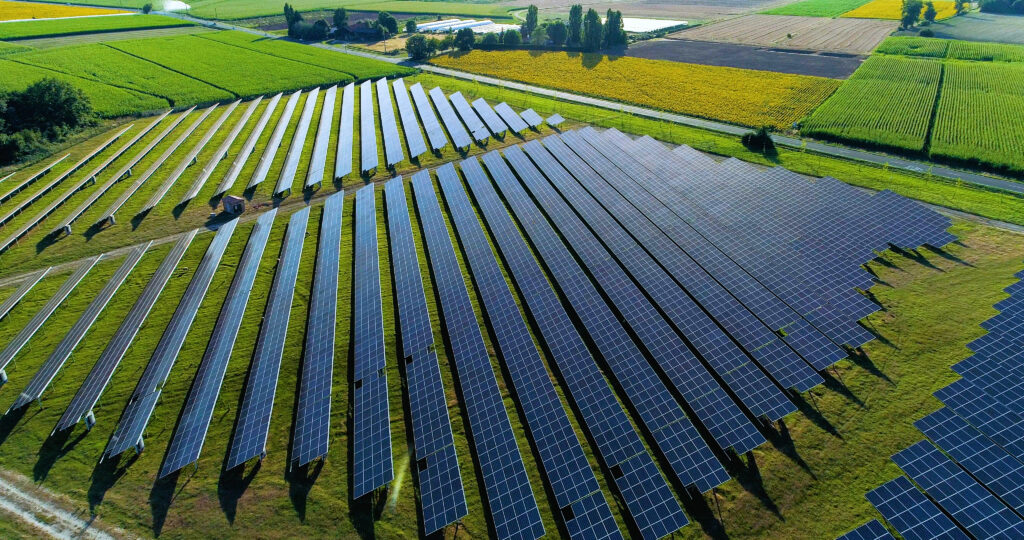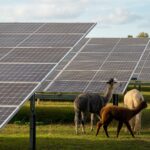Solar energy is positioned to become one of the most important pieces of America’s energy supply, especially as the Biden administration is transitioning the country from fossil fuels to renewable resources. One would expect landowners specifically, including farmers, to embrace sustainable energy as a welcomed source of extra income, but some do not. Oftentimes, there’s a reluctance to consider opportunities presented by developers. In hopes of educating those who have their doubts, what follows are a few of the more popular solar energy myths, debunked.
1. Solar farms risk going "belly-up"
For some, the fear of bankruptcy is tied to the thought of solar projects. Some believe the project developer and their creditworthiness is at stake. However, while project developers have a crucial role in planning and constructing the solar project, once it is operational, it is secured by a long term power purchase agreement (PPA) with the utility company. From then on, it is typical to have the project traded between developers and investment companies. So regardless of who owns the project, the utility will still be on the hook for purchasing power. All in all, maybe a better question to ask would be, “what are the odds the utility will go bankrupt?”. While this can happen, the odds are low.
2. Projects leave a mess at the end
Some landowners fear — once the project development approaches an end — that panels, wiring and sub-surface improvements will need to be cleaned up and removed from the property at their own expense. Most solar lease options include a decommissioning provision, which requires the project owner to remove the panels at the end of the term. But one question remains: “What if the owner decides that it is not worth the expense to remove?”
Decommissioning provisions can be required by law, depending on the state and can stipulate that, if panels or other unwanted materials remain on the property, the project owner must pay rent to the landowner. It’s important to note, though, that unlike other long-term infrastructure projects — like wind turbines or cell phone towers — solar farm construction is simple: solar projects require a series of fixed posts, each placed six feet into the ground, and removing them is much less expensive, comparatively. Additionally, the panels are made of highly valuable metals which can easily be salvaged in the event of a financial upside.
3. There will always be time
After developers extend offers, many landowners tend to think they can wait six months, or six years, before making a decision. However, one key constraint in solar development is the utility infrastructure, which can reach capacity as more solar farms are developed, since each power line and substation has a specific voltage it can handle. So a landowner might have property near a substation that initially offers a perfect solar project site, but if a project is then constructed on another property a mile down the road, you may no longer have the opportunity to move forward with your plans.
4. The land is tied up for years before rent begins
Some landowners can worry about their land being tied up for a few years before the rent starts to come in. Sometimes, when the property is currently being farmed or used recreationally, there is no limit on such usage during the development period. “Tying up” the property may indicate a loss in flexibility, but, if you’re a farmer in the growing season, for example, developers are often happy to include crop provisions to compensate the landowner for the potential damages. After working closely with landowners and developers over the years, we’ve learned that it helps for landowners to be specific about their concerns.
One unavoidable challenge, however, is the time investment. Developers must do their due diligence — investigating engineering, interconnection applications, permitting, and more — all before the likelihood of the project’s success is evaluated. So while it may seem like a “tie up,” there are legitimate reasons developers take their time.

Landowners can be reluctant to seriously consider solar farms, mainly because they are afraid of bankruptcy, the mess, and being tied up for years on end. Fortunately, these misconceptions about solar farms are easy to disprove, and well-informed landowners will evaluate the value of such opportunities as they come. Gaining a true understanding of the opportunities renewable energy provides is the only way we can come closer to achieving any serious reductions in greenhouse gas emissions.
With that said, as a landowner, it can be hard to know who to trust and what information is available. That’s where Scout Land Consultants comes in. Our team is dedicated to identifying sites for solar projects and helping secure land agreements with the country’s top developers. We act as an intermediary between developers and landowners to the benefit of, not only the parties involved, but also the community and environment. If you’re interested in learning more about what Scout Land Consultants can do for you and your community, give us a call at (904) 906-4113, or contact us for a complimentary site evaluation!






